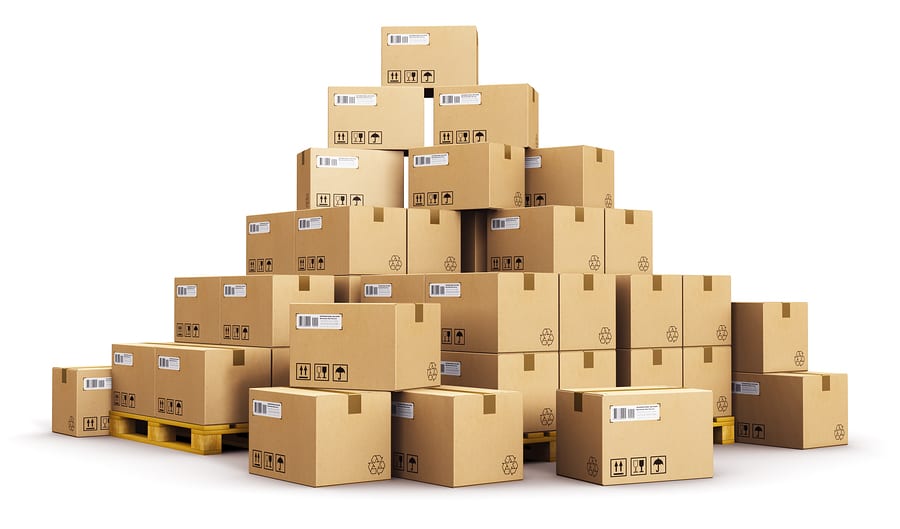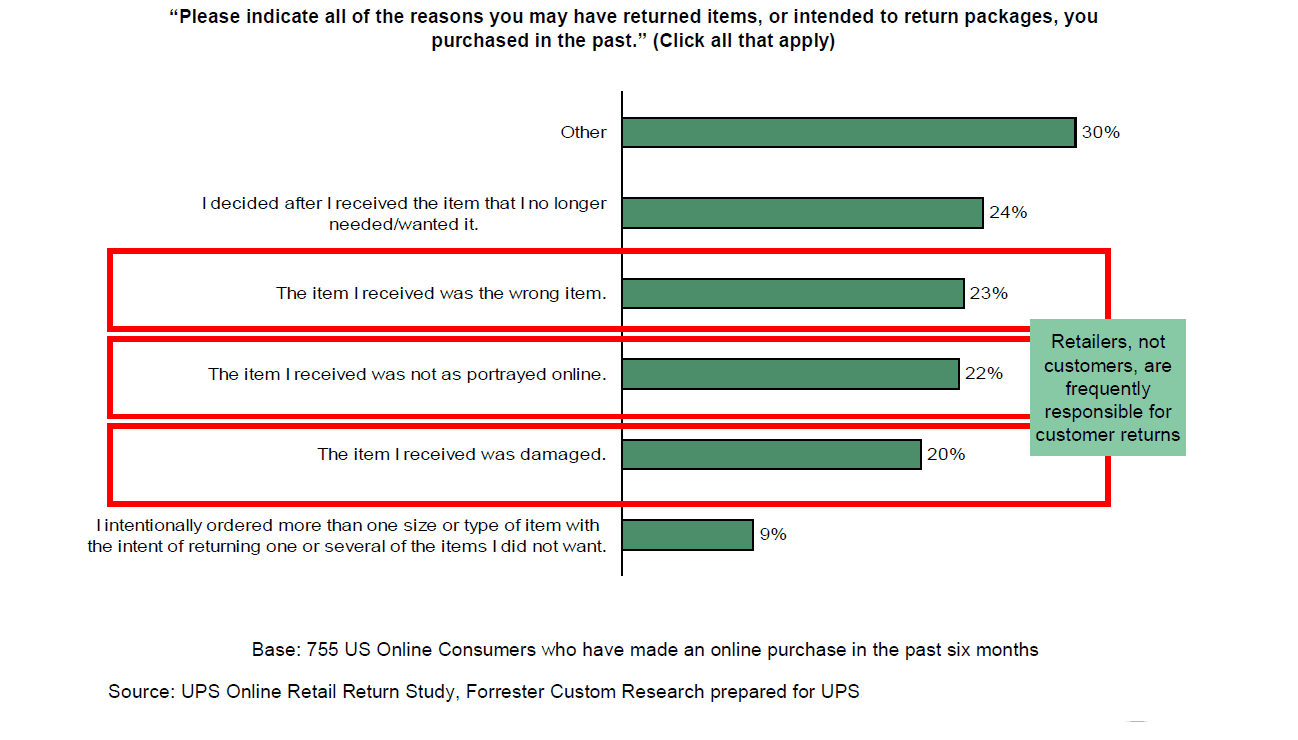How to Streamline Shopify Returns

If you’re one of 200,000+ online retailers in more than 150 countries that uses Shopify as your shopping cart provider, then you’re in good company. Over the years, Shopify has evolved to offering more than 60 new and integrated features, an internal point of sale system and a robust app store that’s jam-packed with different extensions you can add to improve your store, up the ante in marketing and SEO, and even manage your shipping and returns.
Using Shopify to power your ecommerce store is a no-brainer. But when it comes to your online product return policy, that’s where things can get sticky (no matter what shopping cart service you’re using). The simple truth is that returns are a pain point for online retailers and easy returns are a must-have for consumers looking to buy online.
Thankfully, there’s a healthy balance that can be found between the two. Use these tips to learn how to easily streamline Shopify returns.
Understand Why Returns Happen
Before you can begin to streamline returns at your Shopify store, it’s important to first understand why returns happen and what measures you can put into place to reduce them from the onset.
We hate to say it, but in most cases, many of the returns that come back into your store are your fault. Recent statistics on ecommerce returns find that the most common reasons for return are as follows: 22% apparel didn’t fit; 22% item arrived damaged or broken; 22% items was substantially different than advertised online.

By adding things like sizing charts to reduce apparel returns, more padding in your shipping boxes to prevent damage, up to date photos and product videos, verified customer reviews and more, you can reduce these instances of at-fault returns substantially.
How important is your Shopify return policy? These facts tell the whole truth:
- More than 63% of consumers read the online product returns policy before making a purchase.
- 81% of consumers want a convenient returns policy that is hassle-free with no return shipping cost.
- About one-third of all products ordered online are returned by consumers.
- When free returns are offered, sales can increase by as much as 357%.
- When return shipping fees are charged, 81% of consumers are less likely to make a future purchase.
- Zappos gets 75% improved customer loyalty, repeat buyers from free returns, even though they charge more for their products.
Get Your Shopify Return Policy in Order
Now that you understand why returns happen and what you can do to reduce them, it’s time to think about what you’re going to say in your Shopify return policy.
When designing your Shopify return policy, use these four helpful tips to write an ecommerce returns policy that informs customers, amplifies the convenience of making a return, outlines any associated cost or fees, and gives them the flexibility they’re looking for when placing an online return.
Keep in mind, you’re up against juggernauts like Amazon, Target and Walmart, to name a few, and shoppers have ample choices when deciding where they’ll spend their money online.
Four tenants of a good Shopify return policy:
Communication: Make sure that your return policy is clear, easy to read and well defined. Explain how it works, what can be returned, the return-by dates after purchase and any associated rules and restocking or return shipping fees.
[Quick Fact: According to Forrester, 58% of shoppers desire a no-questions-asked return policy.]
Convenience: Online shopping is trendy because it’s fast and convenient. Consumers also want it to be just as easy to send products back. Make sure you offer consumers a way to process a return from your website and print a return shipping label.
[Quick Fact: According to Forrester, 47% of shoppers want an easy way to print a return shipping label.]
Pricing: If possible, offer free return shipping and don’t charge restocking fees.
[Quick Fact: Over 80% of consumers polled by Forrester stated that free return shipping with no restocking fees was a key element they sought with any online store.]
Be Flexible: Be lenient with your return policy. This means offering at least 30 to 45 days for returns. Give customers the confidence they need to make the purchase from your online store, and the sale as well as their loyalty and long-term retention will follow.
Organize Your Reverse Logistics Game Plan
Getting your return policy in order also means shoring up any kinks that may existing in your reverse logistics. Start with how you organize and sort the packages that are coming back into your warehouse. This is made easier when you have the right Shopify returns software powering your reverse logistics processes.
If you’re using third-party fulfillment to process returns, clarify with them how you want to update the process. (Hint: either 3PL or in-house returns can be streamlined with the right software in place.)
Five tips on making Shopify returns easier:
- Create a returns flow chart to guide your team on how to best process returns.
- Dedicate an area or workspace for processing returns, relabeling and repackaging items for resale.
- Consider getting in touch with a local charity to donate unusable returns or investigate options with liquidation houses that offer to buy bulk palletts of returns you can no longer relist.
- Integrate the right software into your return policy that streamlines your returns from start to finish. This includes from the starting point of the return, on your Shopify store, to collecting any associated fees, tracking its shipment back to you and scanning it back into your system once you’ve receive it.
- Measure and meter your process. If you’re experiencing heavy volumes of returns, it’s wise to consider adding another employee that can help ease the workload and improve the accuracy of the products that are being entered back into your system.
Why You Want to Make Returns Easy
We’ve already given you some helpful statistics on ecommerce returns. But here are a few candid reasons why you want to make returns easy for you and for your customers.
Did you know that last year broke all records for returns in ecommerce and by a long shot? One reason is become of the massive and rapid growth of ecommerce. Another reason is because major retailers are revamping their return policies to be more in par with consumer demand.
The truth is that more than 66% of your potential customers will read your return policy and base their buying decision on that. Consumers want the Amazon standard when shopping online, which means you stand to lose a large amount of sales if your return policy is hard.
With more than 80% of shoppers demanding free returns, it’s a wise choice to consider eating this small amount on the occasional return and generating more sales in return. If you do this, and streamline how returns are processed at your Shopify store, you’ll gain more long-term, loyal customers and, ultimately, what used to be viewed as a pain point will be realized as a key amenity and sales driver that helps increase conversion rates and decrease shopping cart abandonment.
Need Even More Tips?
We’ve got you covered with this Ultimate Guide on Ecommerce Returns. Use it as your go-to resource for anything returns orientated. It’s packed with helpful information, statistics, infographics, charts and so much more to help you create an ideal Shopify returns policy and process, so you can make returns as seamless and as painless as possible.

Share On:








